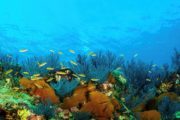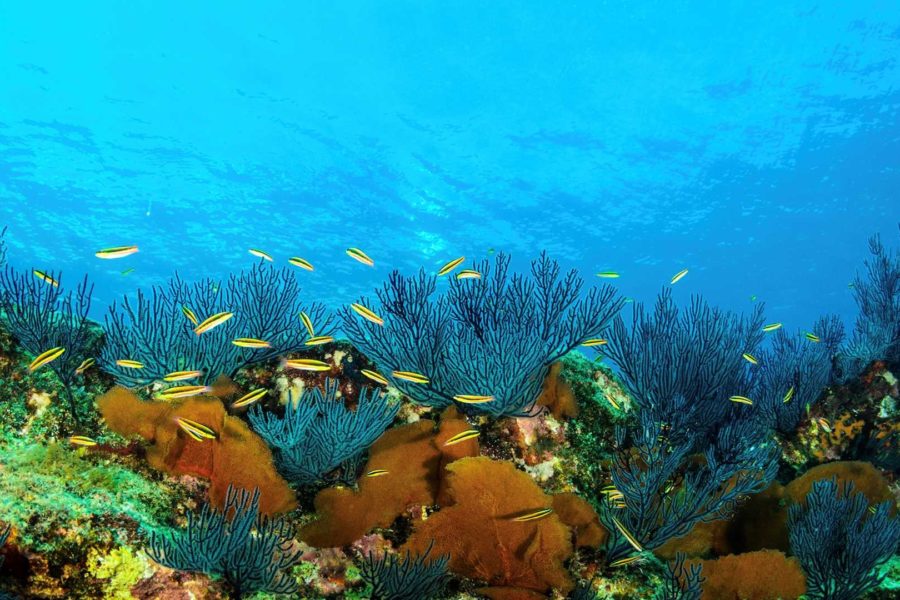Find the best turnkey options in Cabo
humberto@yourcabohome.com 52 1 624 147 7708



Are you interested in fishing in Cabo? Are you not an angler? I have good news for you! You don’t have to be an angler to catch big fish when fishing in cabo. In fact, you don’t need to know a thing fishing in Cabo to be highly successful. So, how can such a claim be made, you ask?
You have two options. Option one is to spend the next couple of years diligently learning proper Cabo fishing technique on your own big boat. Your option two is to quickly uncover the way to catch fish like a pro by reading further.
Do you wish to enjoy the poll-bending thrill of hooking a great big fish on your own fishing line? And, are you willing to pay for a great Los Cabos fishing experience? Then, please let me to show you how to charter a good fishing boat in Cabo.
First, explore how to find the best fishing charters in Los Cabos – big or small, top-dollar or tight-budget. Next, discover how a good charter-boat captain will make your experience fishing in Cabo very easy and exciting.
Find out the type of fish to catch near Los Cabos. And, get some great pro tips too. After you read this post, impress your charter-boat captain with your newly-acquired “know how.”
Keep in mind, the captain is the most important part of the venture. Therefore, it’s not the boat. To explain, big boats provide more accommodations. But, a good boat captain provides your best experience. While floating on the water, learning good technique and catching big fish, the type of boat you’re on just doesn’t matter, as long as it floats – well, maybe it matters a little…
Start by checking Los Cabos fishing charters on Trip Advisor and Yelp. Read the reviews and take notes on location, price, and availability…
Now you have an idea about the fishing charters in Cabo. And, you know how their clients rate them.
Next, here’s what to look for. And, here’s what questions to ask your prospective charter captain:
Being prepared makes all the difference. A little due-diligence on your part will go a long way.
Cabo’s location provides a very exciting place to fish. So, find striped marlin, blue marlin, black marlin, Pacific red snapper, white sea bass, mahi-mahi, and the illusive roosterfish, just to name a few.
Probably the biggest lure for Los Cabos fishing is Marlin. Catch them from mid-April to mid-June. Black and blue marlin are the most targeted species near Los Cabos, but there are others too.
Unlike other types of marlin, black marlin lives only in the Pacific Ocean. And, they’re considered to be a continental-shelf species. That means they usually remain near land. So, they’re unlikely to be seen out in the open water.
Based on migration patterns, most marlin captains don’t venture into the Pacific. They typically prefer to fish almost exclusively east and southeast of Los Cabos. Regardless, marlin are known to be the most exciting fish to catch.
Spanning from July through October, Bisbee’s hosts the three Los Cabos fishing tournaments that escalate from one to the next. In July, the East Cape Offshore tournament is the first of two warm-up competitions before the big Los Cabos fishing tournament in late October.
Then, the second is called Los Cabos Offshore. It takes place just days before the big multi-million-dollar tournament – Bisbee’s Black and Blue.
Before tourism exploded in Los Cabos, the southern tip of Baja California Sur was dotted with tiny fishing villages. That’s due to the rich waters where the Pacific Ocean meets the Sea of Cortez. This is home to great quantities of black and blue marlin, tuna, dorado, wahoo, and many more species. In fact, the Sea of Cortez is the most biologically diverse body of water on Earth. To explain, it supports over 900 varieties of fish.
Bisbee’s Los Cabos fishing tournaments have been taking place for over 30 years. Started back in 1981 by Bob Bisbee Sr., the Bisbee’s Black and Blue tournament has grown from six teams, with winnings of around $10,000, to more than 150 teams, with millions of dollars up for grabs. Then, in 2006, Bisbee’s Black and Blue tournament had its largest total cash payout ever – $4,165,960. And, that event still holds the record as the largest payout in all of sports-fishing history.
Unfortunately, Bob Bisbee Sr., the founder and patriarch of the Bisbee’s Los Cabos fishing tournaments, has peacefully passed away on June 14, 2018 in the north Dallas Metroplex, leaving behind a legacy, a loving family and a huge circle of friends.
The Bisbee’s Los Cabos fishing tournament expanded to the east side of Baja California Sur back in 2000, to host the East Cape Offshore in the small town of Buenavista. This one is “Los Cabos fishing as it used to be.” In addition to marlin, the East Cape Offshore includes dorado and tuna.
Held in July, this Los Cabos fishing tournament is the season kickoff for many anglers. Back in 2012, there were 61 teams and 350 anglers competing. And, the top fish was a 262lb yellow-fin tuna, which set a new record.
Bisbee’s Los Cabos fishing tournaments quickly became very popular. Therefore, a third event was created back in 2002, called Los Cabos Offshore. This one is nick-named the “Little Bisbee’s.” And, it’s more of a social event full of camaraderie, where old fishing buddies reunite, share stories and spend a few days warming up before that final event, the big daddy of the them all…Bisbee’s Black and Blue…five days of the most thrilling sports fishing in the world.
Back in 2013, Bisbee’s Los Cabos Offshore attracted 80 teams and 466 anglers totaling nearly $500,000 in prize money up for grabs. The team aboard Chupacabra won top honors for their 583lb blue marlin and received a check for $206,973. The second place winner was Sneak Attack, for catching a 565lb blue marlin. Their prize was a whopping $189,837 – not bad for 2nd place!
Taking place at the end of October, this is the last Los Cabos fishing tournament of the series and is the most prestigious of the them all. It offers the highest winnings of any sports-fishing tournament in the world. And, it attracts some of the best boats with some of the biggest names in fishing. These fishermen have very deep wallets and usually enroll in all tournament options across the board, often paying $60,000 or more in entry fees and calcuttas (daily jackpots).
There’s good news for those who can’t afford multi-million-dollar yachts loaded with every electronic option and top-dollar equipment. So far, more Los Cabos fishing tournaments have been won by “normal” people than by high-rollers. And, you can charter a good boat, with a great captain, who will provide you with everything you need to win.
Are you interested in Los Cabos fishing, but don’t own a multi-million-dollar yacht? I have more good news for you! You don’t have to be an experienced angler to catch big fish near Cabo San Lucas. In fact, you don’t need to know a thing about Cabo San Lucas fishing to be highly successful.
Each tournament has an early-bird drawing. And, the winner of the drawing receives a free entry to the following year’s tournament. So t o qualify, your paid base entry must be received by the deadline, which is the same date every year. And, the earlier you enter, the more chances you have to win. For example, if you enter the Black & Blue in August, one chip is thrown into the pot. Even better, if you enter in July, you get two chips. In June, you receive three chips, and so on. The free entry is good for the following year only and is non-transferable.
The basic entry into the tournament costs $1500. Entry into all of the competitions brings the cost up to $12500. Prizes are awarded to individual participants and teams. And, winnings are paid out for marlin and other game-fish species.
Daily jackpots for the largest fish in each division are called calcuttas. They’re awarded every day of the tournament. And, after you’ve paid your entry fee, you have the option of buying into a wide variety of calcuttas for the biggest tuna, biggest dorado, biggest wahoo, biggest billfish, and so on.
Don’t miss your opportunity to watch some of the largest creatures on Earth in their natural habitat. Read on and learn how to get the most out of your Cabo whale watching experience. If you’re planning a trip to Cabo San Lucas during the winter or early spring, you’re coming at the perfect time to schedule a Cabo whale watching tour. To be specific, the best months for Cabo whale watching are December to April.
The Sea of Cortez has been a prime birthing spot for Humpback whales for centuries. First, the whales feed and grow in the cold waters of the Arctic sea during the summer. Then, they make their way around Baja California to the Sea of Cortez. There, they mate and nurse their young. In the spring, the whales head north once again, now with their brood. But, it’s before they leave when they offer the unique experience to see these majestic animals in their natural habitat.
In Los Cabos Mexico, from December through March, whale watching tours are offered aboard sailboats that’ll allow you to get near these majestic creatures. Don’t miss out on this exceptional opportunity to sail the sea along with the humpback and gray whales.
Schedule your whale watching tour far in advance, as these tours are usually in high demand. Only during winter and early spring are these tours available. So if whale watching is important to you, make sure you schedule your trip to Los Cabos Mexico during those times.
Named in honor of Spanish conquistador Hernán Cortés (Cortez) by Francisco de Ulloa in 1539, the Sea of Cortez supports over 900 varieties of fish. Also, it supports more than 2,000 species of marine invertebrates. On top of that, the Sea of Cortez is home to many endemic species, which are creatures that only exist there, and nowhere else on Earth.
You’ll find many sea creatures, the largest of which are the migratory whales. And, these whales include humpbacks, California grays, and even orcas or killer whales. Then, you’ll find giant whale sharks peacefully feeding on plankton. Swimming next to these gentle creatures is an experience of a lifetime.
Next, find smaller sea creatures in the Sea of Cortez like dolphins, sea turtles, sea lions, tuna, sea bass, grouper, yellowtail, shark, marlin, scallops, lobster, snapper, shrimp and more. Wow, that was quite a list. These underwater creatures make snorkeling very exciting indeed.
Did you know that the northern part of the Sea of Cortez almost became a United States sea port back in the 19th century?
This is what happened…
After the Mexican-American War (1846 to 1848), when negotiations were underway with then Mexican President, Antonio Lopez de Santa Ana, the land at the northern part of The Sea of Cortez was up for grabs. And, before the Gadsden Purchase in 1854, which gave the U.S. the southern portions of Arizona and New Mexico, President Antonio Lopez fought hard to keep the land that separated mainland Mexico from the Baja California peninsula. In the end, the U.S. allowed Mexico to keep this land bridge, which included the bustling metropolis of Mexicali.